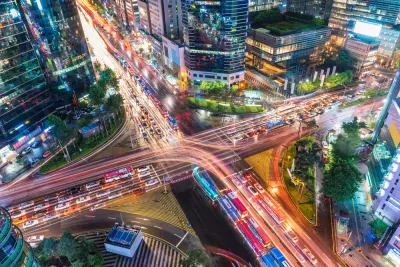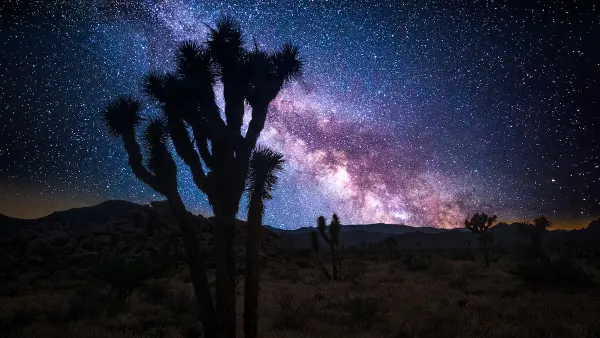Of all the inventions of the modern world, few have been so embraced as artificial light. But constant light, like that which floods city streets and illuminates buildings, is not necessarily healthy or safe. Some cities are trying to go dark.

Electric light has made cities eminently more functional, and visually riotous, than they otherwise would have been. It's the externality that no one seems to mind. Satellite photos of nighttime in the United States, revealing vast lightening-colored blobs and streaks, testify to the ways that we have altered the visual landscape. What is good for functionality may not, however, be good for human health, the environment, our sense of wonder, and even our safety.
Emerging research suggests that our constant flood of light is, via hormonal disruption and sleep disorders, doing awful things to our metabolism and overall health. It confuses animals and creates a "monochrome canopy of muted light grey to almost-but-not-quite-black, dotted, depending on the size of your city, with a dim handful of stars." Surprisingly, excessive light may not make cities more safe or easier to navigate. It turns out that the human eye responds more to contrasts -- whatever the background level of light may be -- than to brightness as such.
A new generation of architects, planners, and lighting designers are figuring out ways to light cities and buildings more smartly, efficiently, and attractively, without incurring the glare and leakage that characterizes the majority of outdoor lighting. "The trick is to illuminate change—steps, doors, paths—rather than entire landscapes."
“There is no universally applicable conclusion that comes out of criminology research that shows that more light means less crime.” Overlighting, in fact, can be worse than dimly lit spaces for several reasons, beginning with the risk of glare. As USC Professor Travis Longcore put it, “If you have bright lights, the shadows become much darker.”
FULL STORY: Darker, Safer

National Parks Layoffs Will Cause Communities to Lose Billions
Thousands of essential park workers were laid off this week, just before the busy spring break season.

Retro-silient?: America’s First “Eco-burb,” The Woodlands Turns 50
A master-planned community north of Houston offers lessons on green infrastructure and resilient design, but falls short of its founder’s lofty affordability and walkability goals.

Delivering for America Plan Will Downgrade Mail Service in at Least 49.5 Percent of Zip Codes
Republican and Democrat lawmakers criticize the plan for its disproportionate negative impact on rural communities.

Test News Post 1
This is a summary

Test News Headline 46
Test for the image on the front page.

Balancing Bombs and Butterflies: How the National Guard Protects a Rare Species
The National Guard at Fort Indiantown Gap uses GIS technology and land management strategies to balance military training with conservation efforts, ensuring the survival of the rare eastern regal fritillary butterfly.
Urban Design for Planners 1: Software Tools
This six-course series explores essential urban design concepts using open source software and equips planners with the tools they need to participate fully in the urban design process.
Planning for Universal Design
Learn the tools for implementing Universal Design in planning regulations.
EMC Planning Group, Inc.
Planetizen
Planetizen
Mpact (formerly Rail~Volution)
Great Falls Development Authority, Inc.
HUDs Office of Policy Development and Research
NYU Wagner Graduate School of Public Service





























